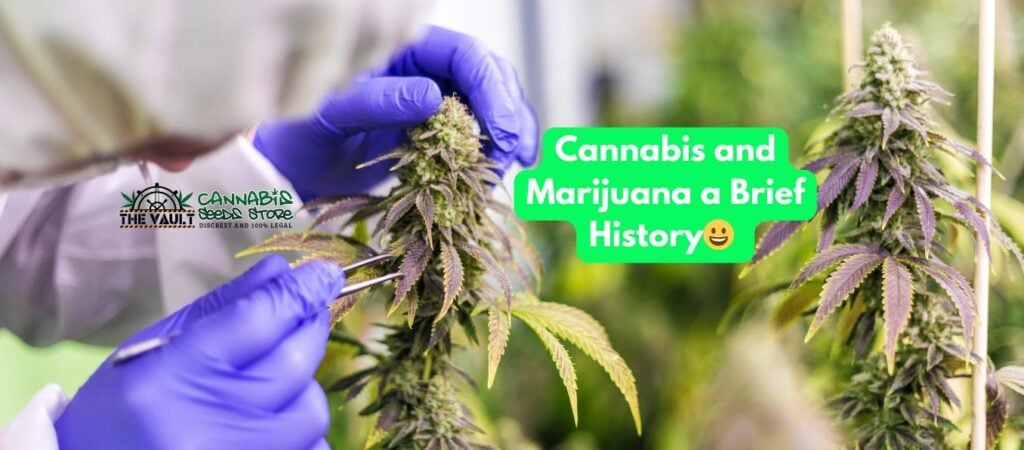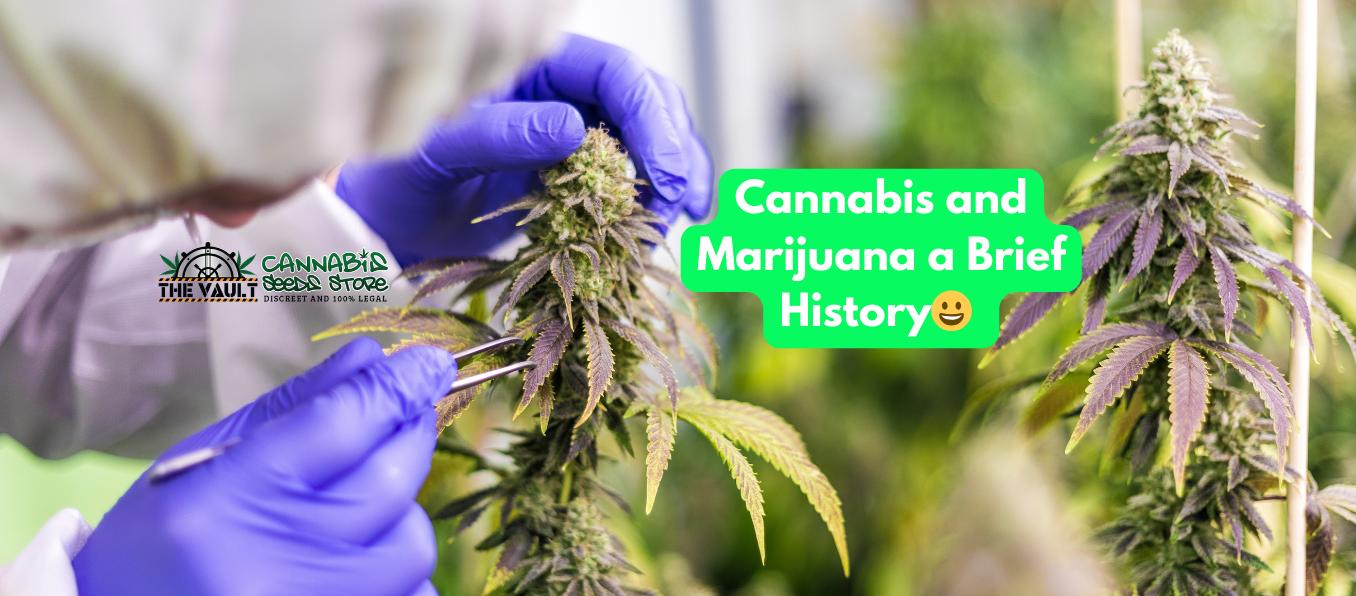
The Fascinating History of Cannabis and Marijuana
A Journey Through Time
Cannabis, known by many names including marijuana, weed, and pot, has a storied history that spans millennia and continents. From ancient rituals to modern medicine, the story of cannabis is one of cultural significance, scientific discovery, and a little bit of rebellion. So, grab a comfy seat and join us as we journey through the history of this extraordinary plant and explore the world of cannabis seeds.
Ancient Beginnings
Our story begins in Central Asia, where cannabis is believed to have originated. Archaeological evidence suggests that humans have been using cannabis since as early as 10,000 BCE. Early cultures in China and Taiwan utilized hemp fibers to craft ropes and textiles. But it wasn’t just about making things—cannabis also found its place in medicine and spirituality.
In China, around 2700 BCE, Emperor Shen Nung documented the use of cannabis in his pharmacopeia. It was praised for its effectiveness in treating pain and various ailments. Meanwhile, in ancient India, cannabis was known as “bhang” and was mentioned in sacred texts called the Vedas. Used in religious rituals and for its medicinal properties, bhang became an integral part of Indian culture.
Spreading Roots
As trade routes expanded, so did the reach of cannabis. It spread to the Middle East, where it was embraced in both medicine and mysticism. The ancient Egyptians, too, utilized cannabis; pollen was even found on the mummy of Ramesses II, suggesting its significance in their society.
The Greeks and Romans were no strangers to cannabis either. The Greek historian Herodotus wrote about the Scythians, a nomadic group known for their ritualistic use of cannabis. By the early Middle Ages, cannabis had made its way across Europe, valued for its versatile fibers and medicinal uses.
The Middle Ages to the Renaissance
During the medieval period, cannabis flourished in the Islamic world. Scholars like Al-Razi and Avicenna documented its medicinal properties. As trade continued, cannabis found new homes in Africa and beyond. African cultures integrated cannabis into traditional medicine and rituals, cementing its role in daily life.
Fast forward to the Renaissance, when European explorers brought cannabis to the New World. The Spanish introduced hemp to Chile in the 16th century, and the British later cultivated it in their American colonies. Hemp became essential for making ropes, sails, and clothing, crucial for the maritime ventures of the time.
The 19th Century and Beyond
In the 19th century, cannabis was a staple in Western medicine. It was prescribed for a range of ailments and was listed in the United States Pharmacopeia from 1850 to 1942. However, as recreational use began to rise, so did the pushback.
Prohibition Era
The early 20th century saw a dramatic shift in the perception of cannabis, especially in the United States. Anti-cannabis sentiment grew, often fueled by racial prejudices against Mexican immigrants and African American jazz musicians who were associated with its use. The Marijuana Tax Act of 1937 effectively criminalized cannabis, setting the stage for a global trend of prohibition.
Following the U.S. lead, many countries enacted strict cannabis laws. International treaties like the 1961 Single Convention on Narcotic Drugs reinforced this stance, casting cannabis into the shadows for several decades.
The Green Renaissance
Despite the harsh laws, the counterculture movements of the 1960s and 70s kept the spirit of cannabis alive. As the medical benefits of cannabis became harder to ignore, attitudes began to shift. California led the way in 1996 by legalizing medical marijuana, sparking a wave of change across the U.S. and the world.
Today, cannabis is legal for medical use in many countries and for recreational use in an increasing number of regions, including Canada and several U.S. states. Research into its benefits and risks continues to grow, and the legal landscape is constantly evolving.
A Closer Look at Cannabis Seeds
Now that we’ve taken a trip through the history of cannabis, let’s delve into the world of cannabis seeds. The type of seed you choose can significantly impact your growing experience and the final product. Here’s a breakdown of the different types of cannabis seeds available:
1. **Regular Seeds**:
– These seeds are natural and unaltered, meaning they can produce both male and female plants. Male plants are typically removed to prevent pollination and seed production, allowing female plants to focus on producing resin-rich buds.
2. **Feminized Seeds**:
– As the name suggests, feminized seeds are genetically modified to produce only female plants. This is advantageous for growers who want to maximize their yield of smokable flowers without worrying about male plants.
3. **Autoflowering Seeds**:
– Autoflowering seeds are bred to transition from the vegetative stage to the flowering stage automatically, based on age rather than light cycle. This makes them ideal for novice growers and those looking for a quicker harvest.
4. **CBD Seeds**:
– These seeds are cultivated to produce plants with high levels of cannabidiol (CBD) and low levels of tetrahydrocannabinol (THC). They are popular for medicinal use, offering therapeutic benefits without the psychoactive effects.
5. **High-THC Seeds**:
– For those seeking a potent psychoactive experience, high-THC seeds produce plants with elevated levels of THC, the primary compound responsible for the “high” associated with cannabis.
The Cultivation Journey
Growing cannabis from seed can be a rewarding experience, but it requires knowledge and care. Here’s a simplified guide to get you started:
1. **Germination**:
– The first step in growing cannabis is germinating the seeds. This involves providing a moist environment for the seeds to sprout. Common methods include using a damp paper towel, placing seeds in water, or planting directly into the soil.
2. **Vegetative Stage**:
– Once germinated, the seedlings enter the vegetative stage, where they grow leaves and stems. During this phase, plants need plenty of light, water, and nutrients to develop a strong structure.
3. **Flowering Stage**:
– The flowering stage is triggered by changing the light cycle to 12 hours of light and 12 hours of darkness (for photoperiod strains). Autoflowering strains will enter this stage based on age. This is when the plants start producing buds.
4. **Harvesting**:
– After several weeks of flowering, the buds will be ready for harvest. The timing of the harvest can affect the potency and flavor of the final product. Trichomes (the tiny resin glands on the buds) are a good indicator—when they turn milky white or amber, it’s time to harvest.
5. **Drying and Curing**:
– After harvesting, the buds need to be dried and cured to enhance their flavor and potency. This involves hanging the buds in a dark, well-ventilated space and then storing them in airtight containers for several weeks.
Final Thoughts
From its ancient roots to its modern resurgence, cannabis has always been more than just a plant. It’s a symbol of cultural heritage, medicinal potential, and the human spirit’s resilience. Whether you’re interested in its history, curious about growing your own, or exploring its medical benefits, cannabis offers a rich tapestry of stories and possibilities.
So, whether you’re a seasoned grower, a curious newcomer, or a history buff, there’s always something new to learn and appreciate about cannabis. Happy growing and exploring!
Newsletter Sign Up
Make sure you never miss another Vault promo – sign up for our newsletter at https://www.cannabis-seeds-store.co.uk/the-vault-newsletter
#TeamVault #OneLove
Legal Disclaimer: The competition winners will have their prizes sent to them via recorded delivery. If you win the competition but don’t receive your prize, we cannot resend competition prizes, so you’ll have to raise this with your local delivery service (In the UK, for example, this would be Royal Mail).
Remember: It is illegal to germinate cannabis seeds in many countries and some remote, less enlightened planets outside the core systems. It is our duty to inform you of this fact and to urge you to obey all of your local laws to the letter. The Vault only ever sells or sends out seeds for souvenir, collection or novelty purposes.


